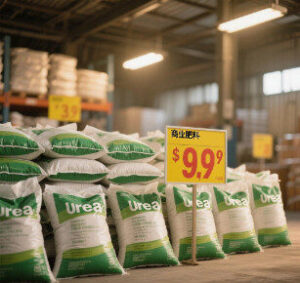China’s sunflower industry is a vital component of its agricultural economy and is currently undergoing a significant transformation. This transformation is being shaped by policy incentives, technological advancements, and evolving market demands. Once focused solely on domestic consumption, the sector has evolved into a global competitor, striking a balance between growth, sustainability, and innovation. This analysis provides an in-depth look at the industry’s current status, challenges, and future outlook, integrating data from government reports, industry alliances, and market research.
In recent years, sunflower cultivation in China has grown remarkably. Since 2020, planting areas have grown by 6%-8% annually, reaching 1.2 million hectares in 2023. Inner Mongolia dominates production with 40% of the national total (7.2 million hectares), leveraging its favorable climatic conditions. It is followed by Xinjiang (18%), Gansu (15%), and Heilongjiang (12%). Technological interventions have been pivotal in boosting yields, which now average 2,500 kilograms per hectare—a 15% increase since 2018. This improvement is largely due to drought-resistant varieties, precision seeding techniques, and widespread mechanization. The edible sunflower segment, which accounts for 70% of output, remains the cornerstone of the industry by serving the snack food market. However, oilseed varieties are rapidly gaining ground and now contribute 30% of total production, driven by rising demand for healthy oils rich in linoleic acid (60%-70%).
Market dynamics reflect a strong upward trajectory. The sunflower seed market reached CNY 4.26 billion in 2023 and is expected to exceed CNY 5 billion by 2025. The growth of high-oleic hybrids like SH363, which now constitute 35% of sales, has been fueled by health-conscious consumers. Sunflower oil, valued for its nutritional benefits, generated CNY 8 billion in sales in 2023, with demand growing at a rate of 12% annually. Beyond traditional applications, the industry is diversifying into new segments. Ornamental sunflowers, for example, generated 25 billion CNY in 2023 due to their use in agritourism and the floral industry. Additionally, deep processing initiatives are unlocking new revenue streams. Protein isolates for plant-based foods, biodiesel production, and activated carbon from hulls collectively contribute an additional CNY 10 billion to the value chain.
The sector’s efficiency and resilience are being reshaped by supply chain integration and technological adoption. Leading companies, such as Longping High-Tech and Sanrui Agricultural Sciences, have pioneered “contract farming” models that covered 31% of planted areas in 2023. This approach stabilizes raw material supplies and increases farmer incomes. Technological breakthroughs abound: GPS-guided planters, IoT-based soil moisture sensors, and drone-assisted pollination have reduced labor costs by 40% and water consumption by 30% in pilot regions. Seed coatings, adopted by 50% of farmers, protect crops further from diseases. The industry has also standardized 12 quality protocols through the Sunflower Industry Alliance, strengthening export readiness.
The transformation is driven by strong factors. Government support plays a central role. The “14th Five-Year Plan” allocates 3.2 billion CNY for sunflower research and development (R&D), breeding subsidies (up 20% year over year [YoY]), and smart farming infrastructure. Land consolidation through cooperatives has enabled large-scale cultivation, with 65% of farmers now participating in cooperative models. Geopolitical shifts have also opened new export markets. In 2023, China’s sunflower exports to Central Asia and Southeast Asia increased by 40%, reaching 28,000 tons. Russia, Kazakhstan, and the UAE emerged as key destinations. Furthermore, the unique ability of sunflowers to rehabilitate saline-alkali lands has attracted 5 billion CNY in government investments, and 800,000 hectares have been converted since 2020. This ecological function expands cultivable areas and aligns with national environmental goals.
Yet, challenges persist. Climate vulnerability remains a threat, with droughts and frosts affecting yields. Only 35% of farmers have access to crop insurance. Dependence on imported, high-quality seeds (18% of which are sourced from Argentina and France) leaves the sector vulnerable to supply chain risks. International competition is intense. Russian and Ukrainian oils undercut prices by 15%-20%, necessitating aggressive branding efforts, such as “China Organic Sunflower Oil” certifications. Pressures to be more sustainable are also mounting as stricter environmental regulations target pesticide overuse in some regions, driving the adoption of biopesticides (up 25% year over year).
To address these challenges and seize future opportunities, the industry is embracing cutting-edge solutions. CRISPR-edited varieties that are resistant to witchweed (Orobanche cumana) are undergoing field trials and are expected to be commercially available by 2026. Circular economy practices are advancing; for example, stalks are being converted into biomass fuel and hulls are being processed into activated carbon. These practices could add CNY 20 billion to the economy by 2030. Digitalization is accelerating, and AI-powered yield prediction models in Inner Mongolia have improved forecasting accuracy by 85%. China’s global ambitions are clear: to capture 20% of the $50 billion global sunflower oil market by 2030 through green certifications and strategic partnerships.
Regional success stories highlight the industry’s potential. In Inner Mongolia, for example, the “100,000-Hectare Sunflower Belt” combines tourism, via sunflower festivals, with agribusiness, generating 1.2 billion CNY in additional revenue. Xinjiang has increased its yield by 25% through the use of drip irrigation and solar-powered pumps, reducing water costs by 50%. These models demonstrate how innovation can provide economic and environmental benefits.In conclusion, China’s sunflower industry is at a crossroads, facing the choice between expanding in scale or upgrading in quality. Key success factors include domesticating high-end seeds to reduce imports, adopting sustainability-first practices to meet global Environmental, Social, and Governance (ESG) standards, and building global brands through digital marketing and premium product lines. The sector aims to reach CNY 200 billion in output by 2025, aligning with the national “Vibrant Villages” initiative to drive rural revitalization. As technological advances and market adaptation continue, China’s sunflowers are blossoming into symbols of agricultural resilience and innovation, poised to shine on the global stage.









